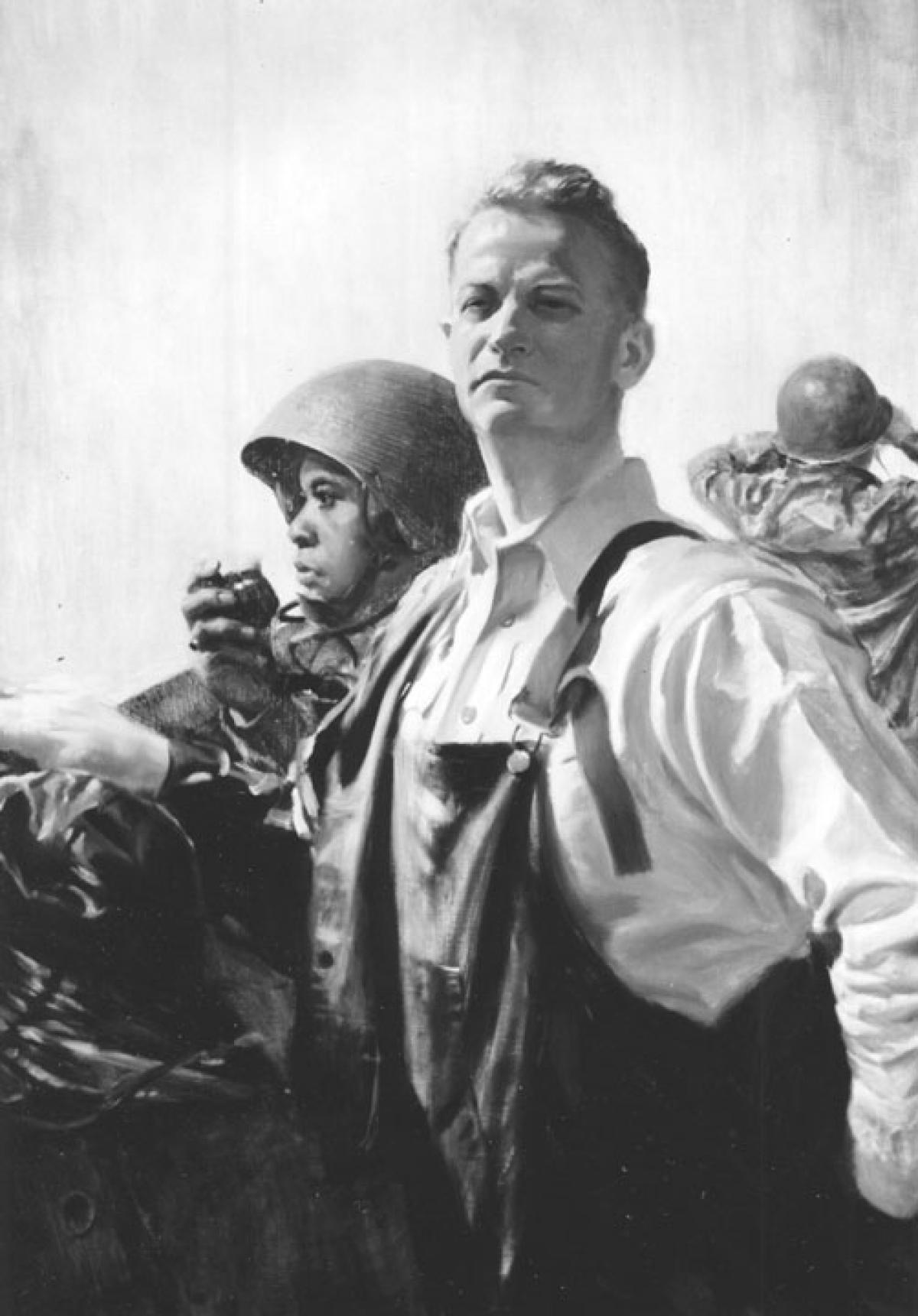On the night of 6–7 August 1943, a task group of six destroyers got under way to intercept a group of Japanese ships that were part of what had become known as the “Tokyo Express,” the sobriquet given to Japanese attempts to resupply and reinforce their forces in the Solomon Islands by nighttime destroyer sorties.
The American task group was headed by Commander Frederick Moosbrugger, who had recently relieved Commander Arleigh Burke, who had been lobbying his superiors for a more aggressive use of destroyers in surface actions. Burke had developed a plan that called for “hitting the enemy with one sudden surprise after another” by “putting two destroyer divisions in parallel columns” and using one of the columns to “slip in close, under cover of darkness, launch torpedoes and duck back out. When the torpedoes hit, and the enemy began shooting at the retiring first division, the second half of the team would suddenly open up from another direction. When the rattled enemy turned toward this new and unexpected attack, the first division would slam back in again.”
Moosbrugger carried out his predecessor’s plan, with the result that three enemy destroyers exploded, their death throes so vivid against the black curtain of night that PT boat crews 30 miles away in Kula Gulf thought they were seeing a volcano erupting on Kolombangara. None of Moosbrugger’s ships was damaged, making the engagement—thereafter known as the Battle of Vella Gulf—the first unqualified American surface-action victory of the war.
But it would not be the last. Several months later, now-Captain Arleigh Burke returned to the Solomons as Commander Destroyer Squadron 23. In an early briefing to his new subordinates, Burke summarized his “commander’s intent” with the admonition: “If it will help kill Japs—it’s important; if it does not help kill Japs—it’s not important.” That aggressive spirit was evident in the various operations led by Burke in the coming weeks, but it was not until the night of 24-25 November that he was able to at last execute his two-division doctrine of attack.
Based on “Ultra” intelligence indicating that Japanese destroyers were to evacuate several hundred Japanese aviation personnel from Buka to Rabaul, Commander South Pacific Force, Admiral William F. Halsey, sent the following message: “Thirty-One-Knot Burke get athwart the Buka-Rabaul evacuation line. . . . If enemy contacted, you know what to do.”
Burke indeed knew what to do. Positioning his five destroyers as directed, at 0141 his surface-search radar picked up a cluster of contacts approaching from the east at 22,000 yards. Over the TBS (short for “talk between ships”) Burke transmitted, “Hang on to your hats, boys, here we go,” and charged at the oncoming enemy force with three of his destroyers, while the remaining two assumed the supporting role called for in his unconventional tactics. The Japanese were surprised and immediately lost a destroyer to Burke’s initial torpedo spread. The other division then engaged another destroyer and sank her, while Burke’s group engaged in a running gun battle with several more enemy ships, ultimately sinking yet another Japanese destroyer.
Later hailed as “an almost perfect action” by the Naval War College, the Battle of Cape St. George sealed Burke’s fame. His follow-on career was one of the most successful in naval history, earning him well-deserved admiration and respect for generations to come.
That storied battle also sealed the nickname Halsey’s staff had given him. For the remainder of his sterling career, he would continue to be known as “Thirty-One-Knot Burke.” While one might be tempted to carry such a swashbuckling name into the hereafter, Arleigh Burke characteristically chose instead to have on his tombstone a single but intensely appropriate word: Sailor.



